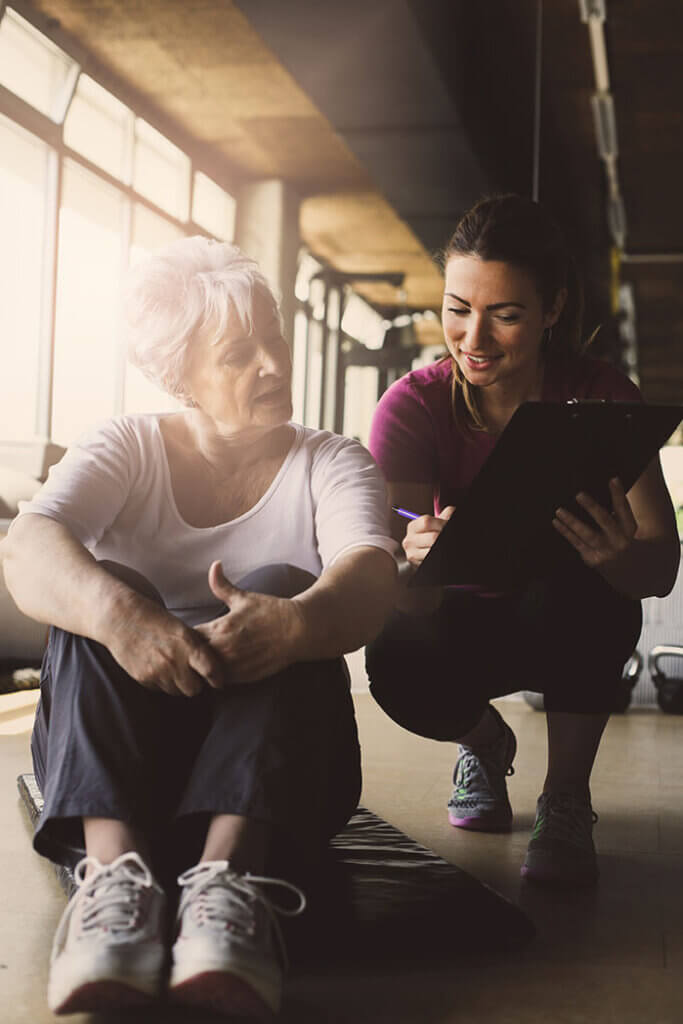Cancer Rehabilitation
How an Exercise Physiologist comes into this.

Why should I see an Exercise Physiologist for a cancer diagnosis?
Accredited Exercise Physiologists have the education, experience, and knowledge to be able to confidently:
· Understand cancer pathophysiology, diagnosis, the various stages, and treatments associated
· Understand the cancer continuum i.e., all phases of cancer care: prevention, early detection, diagnosis, pre-treatment, treatment, survivorship, end of life (add cancer continuum picture)
· Understand the symptoms and side effects of cancer and cancer treatments
· Understand how cancer and its various treatments may influence exercise capacity
· Use specific clinical skills to appropriately screen/assess patients prior to participation in exercise
· Use up to date evidence-based practice to prescribe and deliver exercise for people with cancer throughout the entire cancer continuum
· Apply clinical reasoning to maximise the safety and efficacy of exercise for people with cancer including those with complex needs i.e. other comorbidities
· Use evidence-based practice to promote behaviour change, facilitate self-managed exercise and implement strategies to overcome cancer-specific barriers to exercise
· Provide cancer-specific exercise education, advice, and support to enhance the health and well-being of people with cancer
Exercise recommendations should be tailored to the individual’s abilities noting that specific exercise programming adaptations may be required for people with cancer based on disease and treatment-related adverse effects, anticipated disease trajectory and their health status. Accredited Exercise Physiologists and Physiotherapists are the most appropriate and qualified health professionals to be prescribing and administering exercise programs to those individuals living with cancer (Hayes, Newton, Spence and Galvão, 2019).
How often do I need to exercise after a Cancer Diagnoses?
The current recommendations for physical activity are relatively similar to the recommendations for the general public, with minor adjustments and case-by-case modifications. All individuals living with cancer are encouraged to progress towards and maintain participation in:
– At least 150 minutes of moderate intensity OR 75 minutes of vigorous intensity aerobic exercise each week
– 2-3/week resistance sessions (i.e. lifting weights) each week which include moderate-to vigorous-intensity exercises targeting the major muscle groups
Do I need experience in exercise?
Not at all! We understand that gyms can be intimidating, for some people this may be their first time entering into a gym, we make it our mission to ensure that you feel safe, supported, and valued from the moment you enter our doors! We recognise that people will be starting at different fitness levels and experience, we are able to adjust exercises accordingly to make them easier or harder depending on where you’re at in your fitness journey.
What sort of exercise is safe?
Most forms of exercise are safe and recommended! See below for some examples of exercise modes that are recommended:
Resistance training – strengthening the muscles & bones.
· Pilates
· Yoga
· Weights
Aerobic exercises – increasing your cardiovascular system.
· Swimming
· Walking
· Cycling


What does the science say for exercise, drug therapy, and other methods of treatment or rehabilitation? What works and why?
All individuals living with cancer should avoid inactivity and return to normal daily activities as soon as possible following diagnosis (i.e. be as physically active as current abilities and conditions allow)
The Clinical Oncology Society of Australia call for:
· Exercise to be embedded as part of standard practice in cancer care and to be viewed as an adjunct therapy that helps counteract the adverse effects of cancer and its treatment
· All members of the multidisciplinary cancer team to promote physical activity and recommend people with cancer adhere to exercise guidelines
· Best practice cancer care to include referral to an accredited exercise physiologist and/or physiotherapist with experience in cancer care
Benefits of Exercise
The benefits of exercise through and after cancer treatment have been extensively reviewed in the last decade, with a large majority (75%) of these studies favouring the positive effects of exercise on a range of treatment related side effects, functional, physical and mental outcomes. Some examples of the benefits of physical activity can be seen below:
– Increase strength, power and coordination
– Improved bone mineral density
– Improved balance & reduce risk of falls
– Increase range of motion of joints
– Reduced cancer-related fatigue
– Improved overall quality of health
– Improved mental health, mood & self-esteem
– Reduced severity of symptoms and cancer-relate side effects
– Reduced chance of developing other cancers and co-morbidities i.e. cardiovascular disease, osteoporosis or diabetes.
